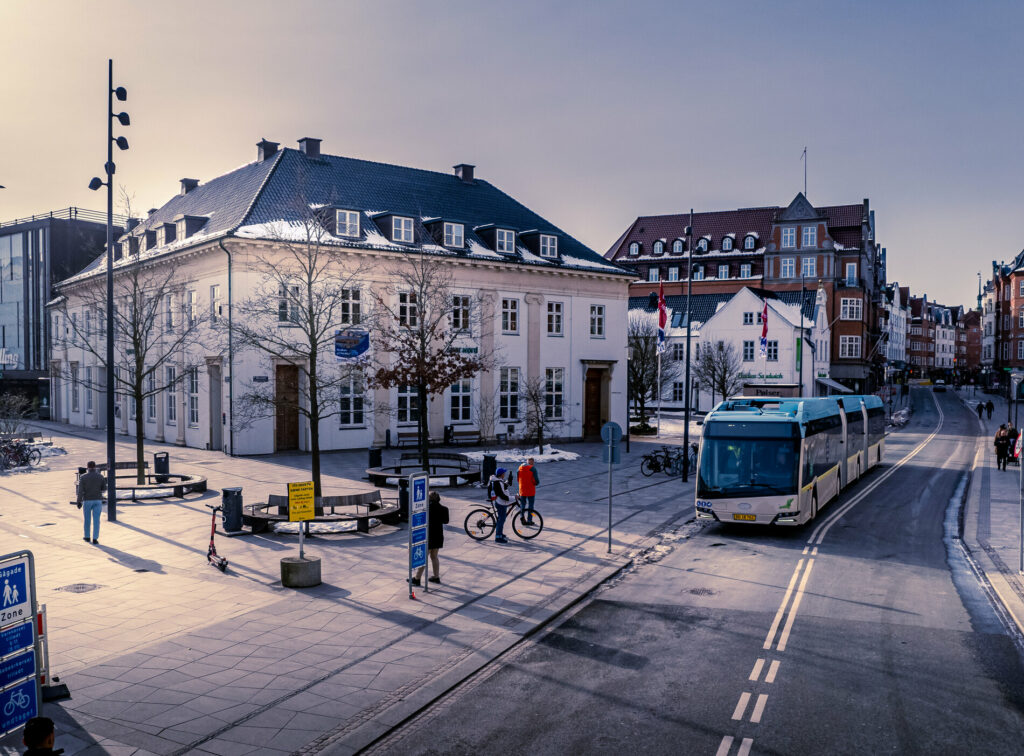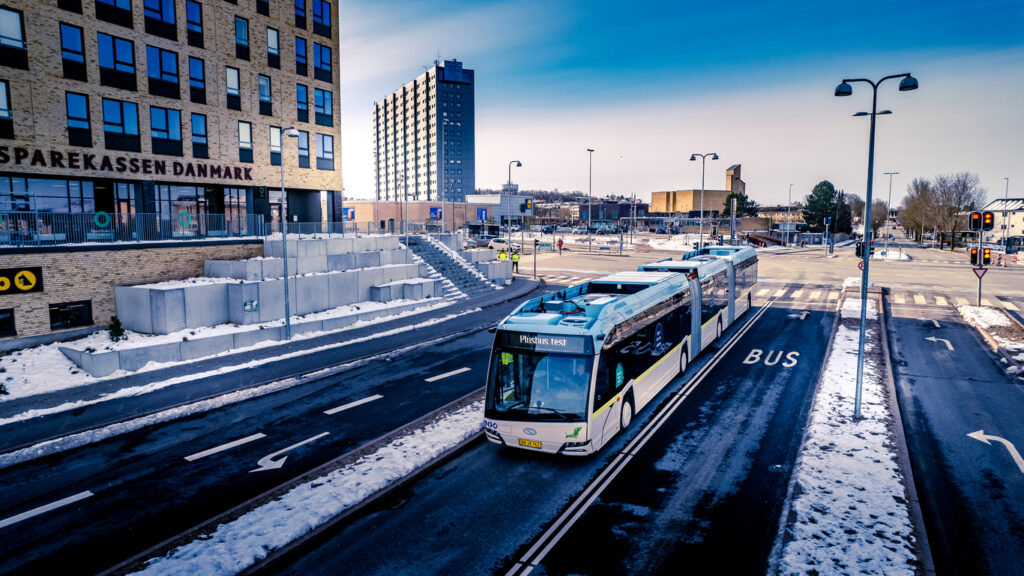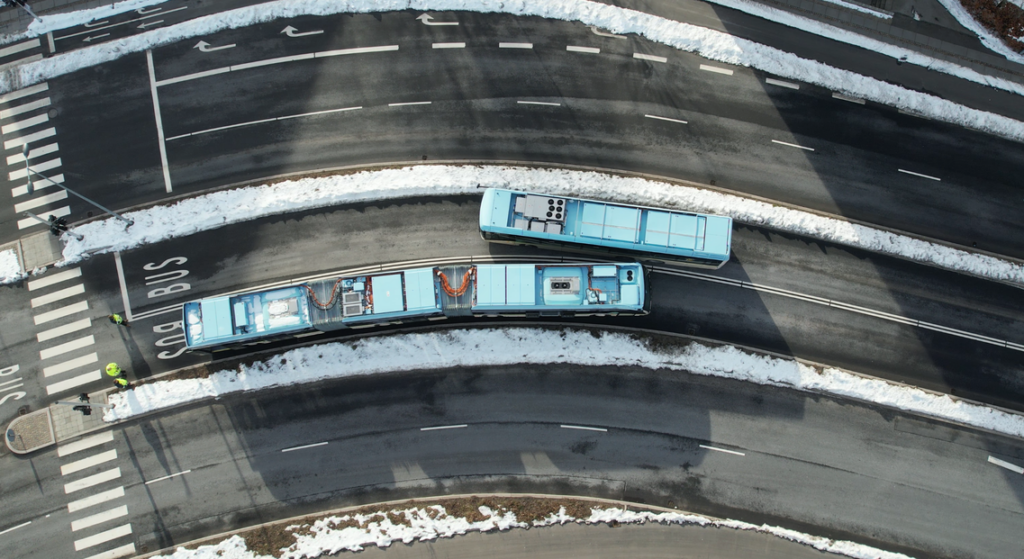UITP: 140 years of mobility and one question that remains as relevant as ever
Before the Summit in Hamburg begins, it is worth taking a closer look at what UITP is.

Bus Rapid Transit in Denmark: Aalborg
In 2023, Aalborg, Denmark’s fourth-largest city, launched its first BRT (Bus Rapid Transit) line. This system is operated by unique, battery-electric Solaris Urbino 24 buses with a double-articulated design. This is the city’s solution for enhancing urban transport – what makes it work?
Aalborg, a Danish city located on the northern Jutland Peninsula, is home to Denmark’s first BRT system, implemented in 2023. The line is served by cutting-edge, double-articulated electric buses Solaris Urbino 24 electric. This is an innovative solution aimed to transform the urban transit landscape.
BUS RAPID TRANSIT (BRT) – what is it?
Bus Rapid Transit (BRT) is a public transportation system designed for large cities struggling with high passenger traffic, designed to improve the efficiency and comfort of urban transport. It involves dedicated bus lanes separate from general traffic, high-frequency service, and customized infrastructure such as level boarding platforms. These elements create a faster, more comfortable, and dependable option for city commuters.

A MODERN BRT SYSTEM IN AALBORG
With a population of 120,000, Aalborg is not the kind of large European conurbation that comes to mind when thinking about BRT systems. However, the city is growing rapidly, with a net increase of 1,600 inhabitants per year. If these new residents maintain the same commuting habits as current ones, daily travel will increase by 400,000 kilometres, with car traffic accounting for 79% of urban mobility. This is why needed to find an alternative solution. The local authorities decided to invest in a modern transport system based on public transport, with the aim of increasing the number of passengers on the entire urban network. The goal is to have a fast (thanks to a simple route with a dedicated lane), accessible (regular service with good frequency), comfortable (high passenger capacity) and reliable (advanced technology) urban transport.

The new BRT line, called Plusbus, is 12 kilometres long and has 22 stops. The route runs through the centre of Aalborg and connects key points in the city, such as the two main railway stations and the university campus.
Buses run every 7.5 minutes on weekdays and every 15 minutes during rush hours and weekends. Each of the double-articulated giants can carry up to 153 passengers, with 49 seated.
AN ELECTRIC LINE
This cutting-edge system is backed by equally cutting-edge technology – the Solaris Urbino 24 double-articulated electric buses selected to operate the new BRT line in Aalborg. These almost 25-metre (24.7-metre!) vehicles are equipped with advanced Solaris High Energy batteries with a capacity of 700 kWh and two traction motors. This solution not only increases the capacity of the public transport system, but also makes a real contribution to improving the air quality in the city – the buses are zero emission at the point of use.
SETTING NEW STANDARDS IN PUBLIC TRANSPORT
The Danish BRT system, operated by double-articulated Solaris electric buses, replaced the previous bus route 2. Not only the vehicles used for the service had to be changed, but also the route itself had to be adapted to BRT standards. Buses now run in dedicated bus lanes (some of which had to be created in new locations), have priority at traffic lights, bus stops have been redesigned and the movement of other vehicles along the route has been restricted.

Thanks to the introduction of BRT, the other buses in the city also benefit from improved infrastructure, contributing to smoother traffic and a more comfortable ride. For the passengers, as they themselves point out, riding the modern double-articulated buses is a unique experience.
Aalborg’s Plusbus system is an example of an innovative approach to urban transport that could become a model for other cities in Denmark and around the world. The authors of the project claim that this solution has the potential to transform not only the transport sector, but the city itself:
„This is more than a traditional road project. This is more than just a bus line driving through the city. It has to offer something extra. We want to create small urban “pockets” spread around the route, where it’s pleasant to stay and pass through. They have to make travel easy, but they also need to add quality of life to the city and the cityscape”
„The bus route needs to act as a green elevator through the city. We don’t want a highway or a big traffic machine through Aalborg. We want green mobility because this is a place where people live their lives”
say project architects Laura Græsdal Maajen and Bodil V. Henningsen.

Before the Summit in Hamburg begins, it is worth taking a closer look at what UITP is.
Overnight depot charging is the simplest and most efficient way to power the e-bus fleet.
Opportunity charging, off-depot charging - what exactly does it mean?